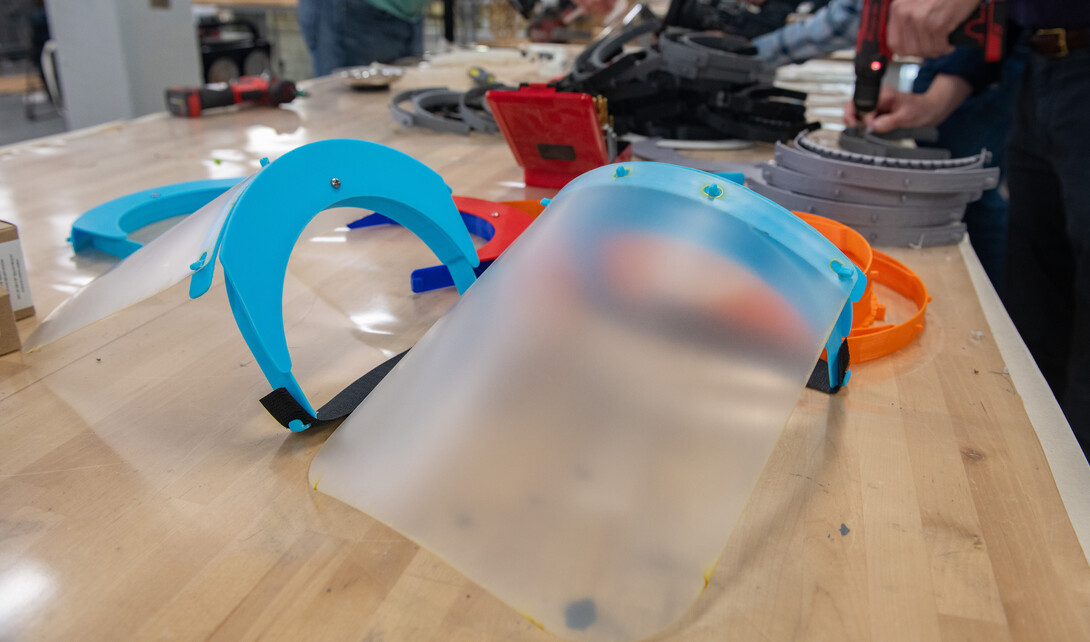
Face masks are now the new norm in classrooms, offices and public spaces across the University of Nebraska–Lincoln.
For students who are deaf or hard of hearing, however, interacting with someone wearing a face mask can be challenging. The masks block vital facial cues, take away the ability to lip read and make it harder to hear the speaker’s voice.
Aiming to bridge that gap in accessibility, the university’s Services for Students with Disabilities office will begin offering clear face shields made at Nebraska Innovation Studio to colleges and offices across campus. The shields are available free of charge for any Husker student, faculty or staff member and can be requested on the COVID-19 Wellness Supplies website.
“Having these face shields on hand for the fall semester reflects the university’s commitment to an equitable experience for all students,” said Barbara Woodhead, assistant director of Services for Students with Disabilities. “It is our goal to make sure students can fully engage and participate in the classroom, and this pandemic has pushed us to carry out that mission.”
Beginning in May, Woodhead began conducting research and consulting with the Center for Transformative Teaching, colleagues from other universities, national higher education organizations and deaf and hard of hearing students on campus. The office was at first considering purchasing face masks with clear, plastic panels, but decided on the face shields instead for a number of reasons.
“The minute you put a face mask on, you lose 10 to 15 decibels of sound. Even if the mask has a clear, plastic panel, it blocks that projection,” Woodhead said. “Face shields allow for the same amount of volume, offer deaf and hard of hearing students the greatest visual access to the speakers’ faces and are less problematic for instructors who may need to wear a microphone for a student using an assistive listening device.”
Fortunately, the office didn’t need to look far to find face shields in Lincoln. Nebraska Innovation Studio began 3-D printing them for healthcare workers last April and agreed to provide more for university instructors, staff and students for the fall semester.
“Having the face shields made here is absolutely fantastic. We haven’t had to worry about where to purchase them from, which has been a huge benefit to us,” Woodhead said.
After months of hard work, Woodhead has emerged with a positive perspective on the current situation, and she is looking forward to helping more students in the coming months.
“Though we are experiencing an extremely disruptive and challenging time in campus life, I am proud to say I have never witnessed a more committed and collaborative campus community than right now,” Woodhead said.
Students in need of accommodations can contact Woodhead at barbara.woodhead@unl.edu or visit the Services for Students with Disabilities website for more information.
According to experts at the University of Nebraska Medical Center, face shields — while not optimal — are an acceptable protection option for supporting students who rely on lip reading. Instructors and staff who use face shields without an accompanying facial covering should stay fixed in the room rather than circulating. Face shield wearers should also maintain physical distancing of at least six feet to further mitigate risk.
Face coverings — including the use of face shields — are a single component in the university’s layered approach to COVID-19. Learn more about the university’s response to the virus.








